Photos and story by Jay Carlisle
After a couple of weeks of fund-raising and other office work, I happily jumped at a chance to get out for a couple days of woodpecker surveys on the Boise National Forest. I needed to stretch my legs, I hadn’t heard or seen a Black-backed Woodpecker in about a year, and – this is important – there were no World Cup games on the schedule for 2 straight days so I had a perfect window in which to get out!
I waited until after the US-Belgium game ended on Tuesday afternoon so I got a late start heading out and arrived to camp around 11pm. I was awake a little after 5am the next AM to start a steep hike along the Riordan Lake trail to reach my first survey point around sunrise. Surveying for birds in a new area is always exciting for me and of course there’s always the hope of seeing other wildlife on the trail. The partly burned forest surrounding the creek and Hennessey Meadow made for a great backdrop and the meadow itself supported a diverse riparian bird community, including Fox, Lincoln’s, and Song Sparrows; Dusky and Willow Flycatchers; and more.
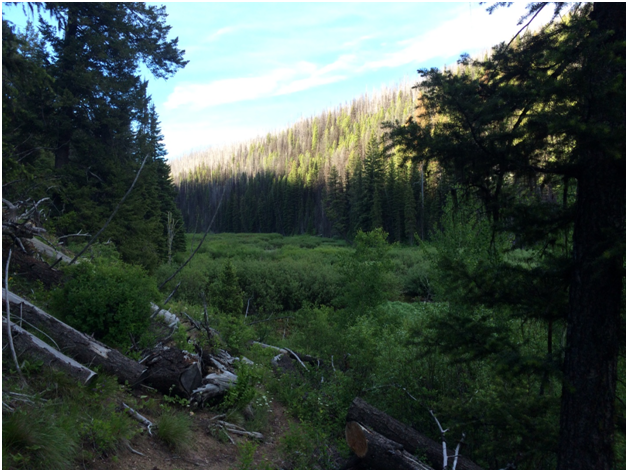
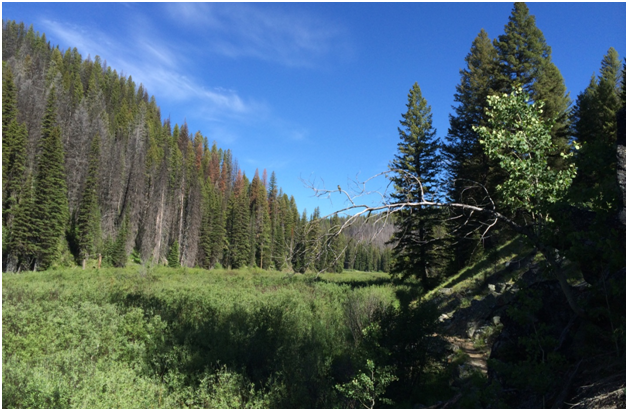
On my 5th survey point I had an almost immediate response from a Black-backed Woodpecker and soon there were 2 individuals – a good start! I ended up detecting one more Black-backed and also observed four other woodpecker species (Downy, Hairy, Northern Flicker, and Red-naped Sapsucker) and other fun birds like Olive-sided Flycatchers.
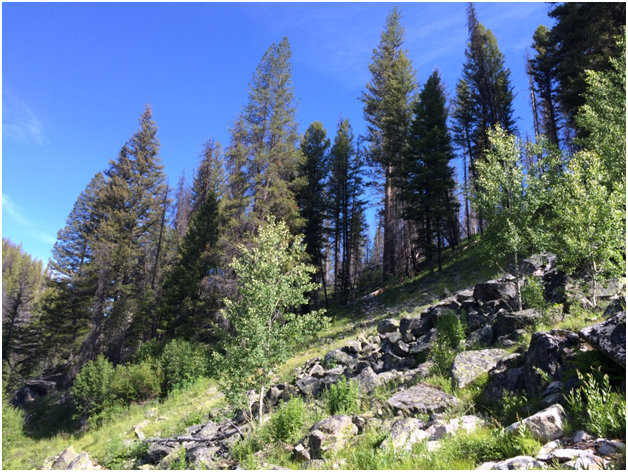
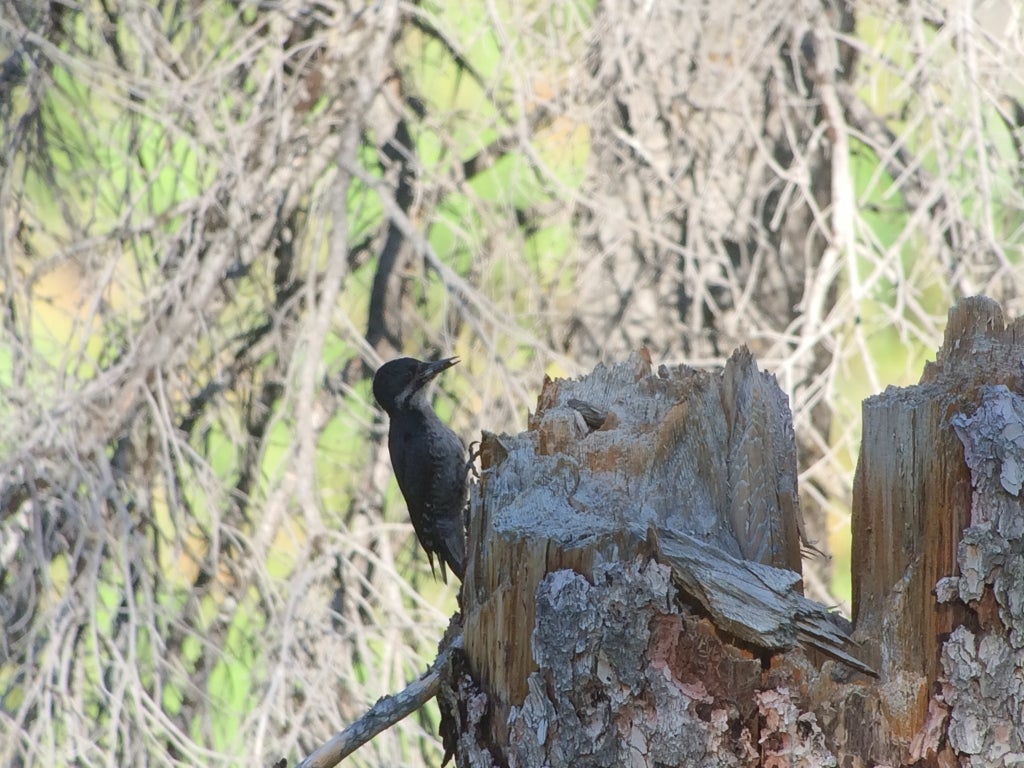
After my long hike down, I drove back towards Warm Lake in order to get lunch and find some WiFi access so I could finish work on submitting a proposal before heading back out to my next site. As I got alongside the lake, I saw an adult Red-necked Grebe carrying a chick on its back – how cool!

Thus, I was already fully content with my trip sightings before heading to my second site. My drive that evening took me through miles of burnt trees and it was daunting to think about how large of a fire this was … but also how much habitat this had created for species like Black-backed Woodpeckers, Olive-sided Flycatchers, Mountain Bluebirds, and even American Robins – all of which reach higher densities in burns.
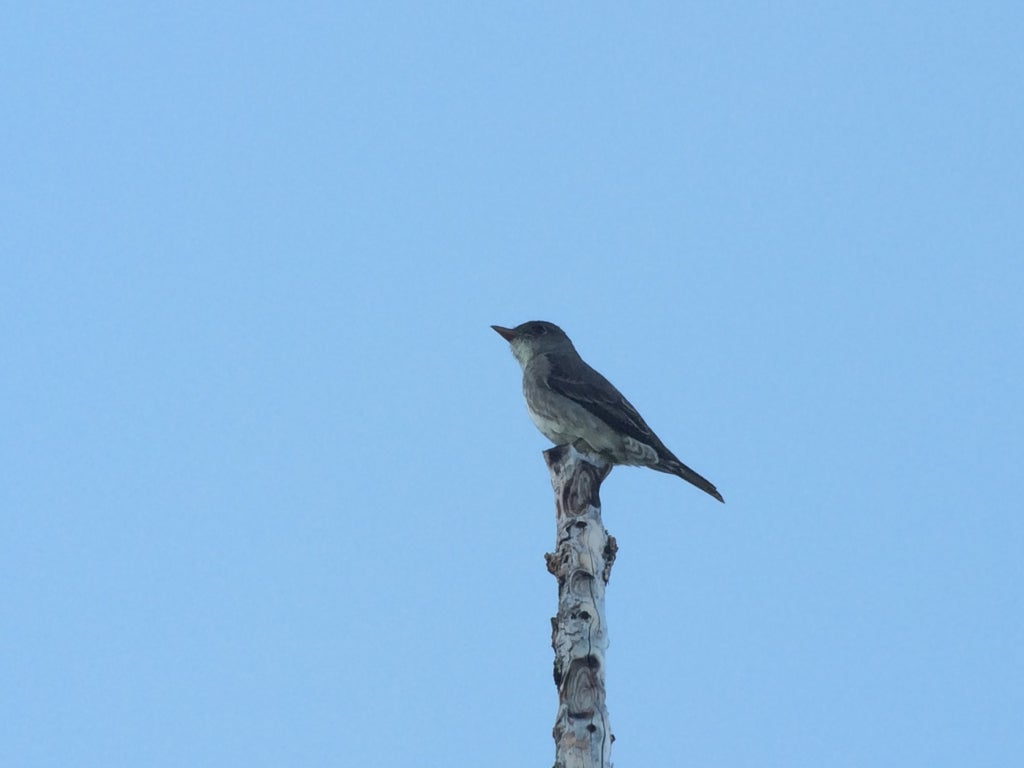
As I drove up the final road, the wind picked up because of a nearby thunderstorm and I hoped no trees would blow down to block my passage in or out! Fortunately, the storm and wind soon subsided. I arrived around 830pm and was more than a little dismayed to find a large and hungry greeting party of mosquitoes! After psyching myself up, I started walking around in search of a good flat place to set up my tent and was swatting mosquitoes constantly – not thinking about birds at all and not carrying binoculars. Then I looked up and saw a bird-like shape on the side of a snag – my heart jumped a bit because of the apparent shape but then I reasoned it had to be one of those thousands of pieces of loose bark hanging off the trees in the area. Then I saw its head turn and I said to myself, “No way!” before stumbling/sprinting my way back to my car to get binoculars, scope, and camera/phone attachment for the scope. A Northern Hawk Owl! I’d been so preoccupied with biting insects that I hadn’t really noticed that the habitat had a boreal nature to it and was similar to other places where I’d seen Hawk Owls … it’s just that I was 250+ miles from the nearest known breeding area. I hurried to snap a few documentation pictures before the sun disappeared. While I was observing the bird, I noticed that it was hanging around the same area and even gave a couple of quiet vocalizations. It made me curious about how long this bird had been here and was it possibly occupying a territory? But, the mosquitoes soon drove me to set up my tent and seek refuge.
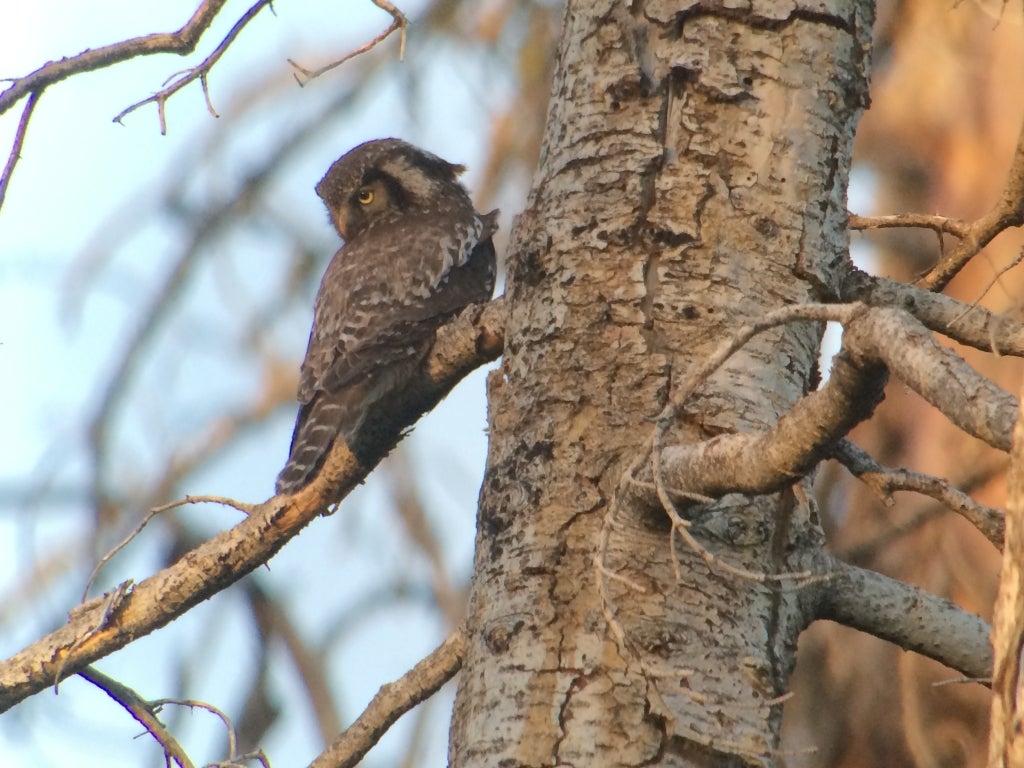
Thus, I hurriedly set up my tent and crawled inside – and basked in the excitement of an unexpected sighting of such a charismatic bird! I’d only just started to relax when I heard a high-pitched screeching – I knew I’d heard this sound before and it was when I’d seen fledgling Northern Hawk Owls in Glacier National Park (closest known breeding area) a few summers ago! I knew I wouldn’t have much time to look in the morning as I had woodpecker survey duties so I raced out of my tent. I soon saw an adult in a different area and it flew over me towards the main activity area – this bird was noticeably bigger than the other adult so I must have originally been seeing the male and this was the female! I soon confirmed a view of at least a single fledgling and thought I heard another – but I didn’t want to intrude any closer to pursue the other bird. I had just confirmed breeding Northern Hawk Owls well over 250 miles from where they’ve been documented to breed previously!
I was too excited to sleep for a while so it was another short night and I was awake again before sunrise for woodpecker surveys. After my first point, I took 15 minutes to try for a few more pictures before I continued on my woodpecker transect. I was quickly rewarded with seeing the male capture, kill, then cache a songbird (I’m pretty sure it was a Yellow-rumped Warbler but hard to tell in the low light)! I heard a juvenile beg once but apparently dad didn’t think junior was hungry enough :-) The lighting was still terrible but I tried for a few more pics before moving on and was lucky enough to get this video of a juvenile playing with a branch (!) and a couple other pictures.
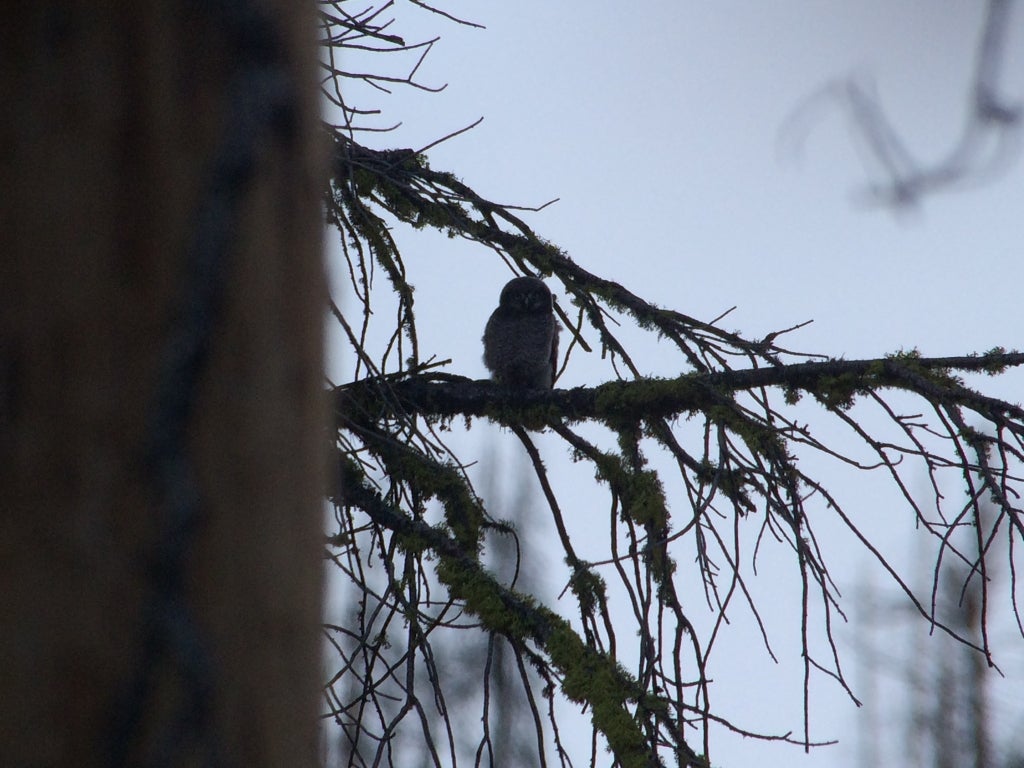
The following evening, Larry & Missy Arnold “chased” these birds and confirmed 2 fledglings; thus, 2 adults and at least 2 fledglings! The story gets even better … on the way back home, they stopped to move a fallen tree out of the way and Missy looked up to see another Hawk Owl miles away and a little exploration turned up a total of 2 adults and 3 fledglings. I was excited at seeing one bird and blown away to have documented nesting … but 2 nesting pairs a few miles from each other is mind boggling! It’s such a remote area with relatively few biologists and birders so it’s hard to know what to make of this. Have they been there in prior years, just unnoticed? Or is this a relatively recent colonization event? One Hawk Owl came to Moscow, ID this past winter and we wondered then if that was an isolated event or if others had possibly arrived to more remote areas of Idaho. I don’t think we’ll ever know for sure but future study of this phenomenon might be worthwhile going forward.
*Because of the rarity of the species (especially rare is evidence of breeding in the state – I know of only one other breeding record in Idaho), their confiding nature, and the potential for foul play, I’m reluctant to post the exact location or directions on a public forum. I trust all birders but just don’t want to inadvertently mess up a good thing by letting the info get into the wrong hands. I don’t know all details but >10 years ago there was a pair w/ fledglings in N Idaho and some birders worried they ended up shot & I don’t want the same result.